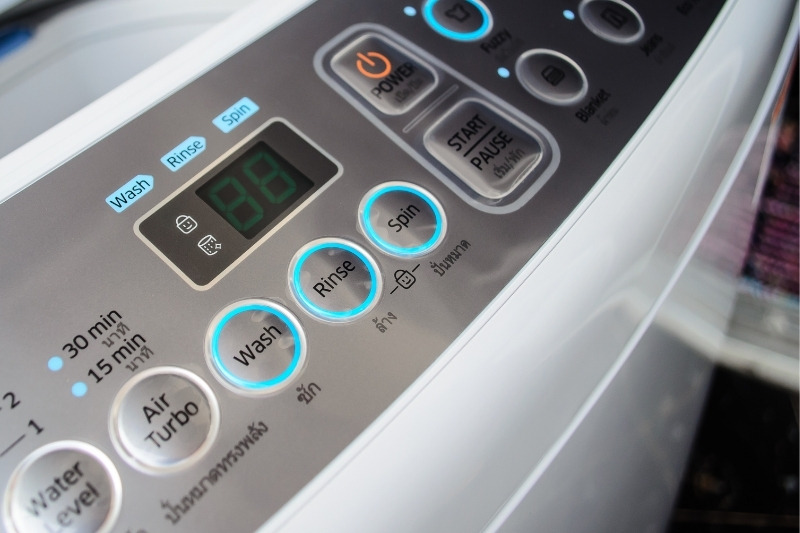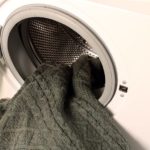We all know the drill when it comes to doing laundry. You put clothes in, add detergent, and hit the start button.
But what is the difference between a wash and rinse cycle on a washing machine? And which one should you use for your particular load of laundry?
Here’s a breakdown of each cycle to help you make the best decision for your clothes. By the end, you’ll have a clear idea of which one you should be using. Let’s take a look!
If you think about it, wash and rinse are nearly the same. But when you understand their main functions, you’ll know their differences.
Wash
Wash is when your appliance is filled with clean water based on your selected load size. It then adds your choice of detergent to the water before letting it mix and swirl with your clothes.
The water will mix with the detergent to wash your clothes as the machine drum spins around to agitate them. As it does, your clothes will have the soapy residue on them and the surrounding water will become dirty as it cleans.
The water needs to be drained out from the washing machine before adding clean water for the rinse cycle.
Rinse
In this specific cycle, your clothes are washed and rinsed using fresh, clean water. You won’t need any detergent for this cycle as its purpose is to simply run clean water through your clothes.
Once agitation starts again, the clothes will start releasing the remaining dirt and detergent that clung to the fabric until they are completely clean.
Does My Machine Wash and Rinse My Clothes on the Same Cycle?
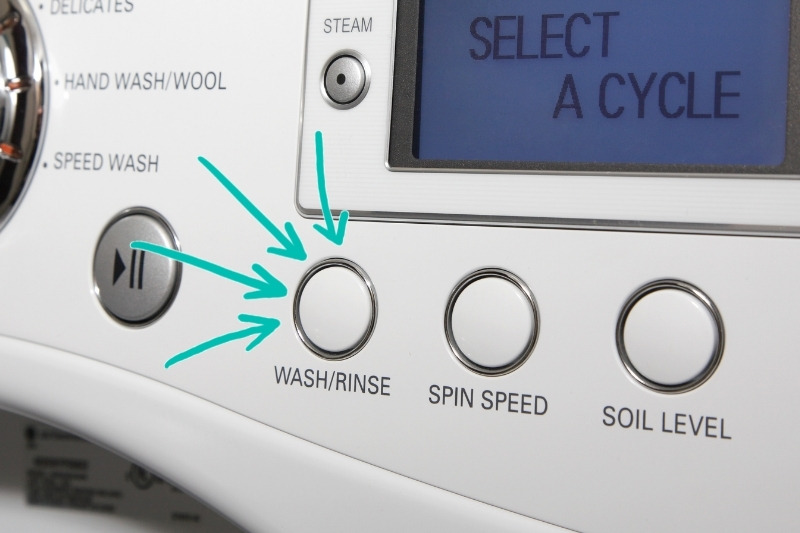
On a standard cycle, yes. While many machines may have separate wash and rinse cycle options, most cycles will include both a wash and a rinse in a three-step process.
If you were to choose a ‘regular’ cycle, for example, then this cycle will first wash the clothes with detergent, rinse them with clean water and then spin it to get rid of any excess moisture.
Using a rinse cycle on its own is a good idea when you think that your clothes don’t need to use any detergent or perhaps there is still some soap residue on your clothes after you take them out of the machine and want to get rid of it. It can also be useful if you’ve hand washed clothes and want them rinsed and spun.
What Is the Function of Rinse in a Washing Machine?
The rinse cycle on a washing machine is important for several reasons. First, it helps to remove any residual soap from your clothing. This is important because soap can trap dirt and cause colours to bleed.
Additionally, the rinse cycle helps to rinse away any fabric softener that you may have used. Fabric softener can leave a waxy buildup on clothing, which can reduce its absorbency and cause it to repel water.
Finally, the rinse cycle helps to evenly distribute laundry detergent throughout a load of laundry, ensuring that clothes are properly cleaned. Without a rinse cycle, your clothes may come out clean but they will likely be covered in soap scum and detergent residue.
Other Washing Machine Cycles
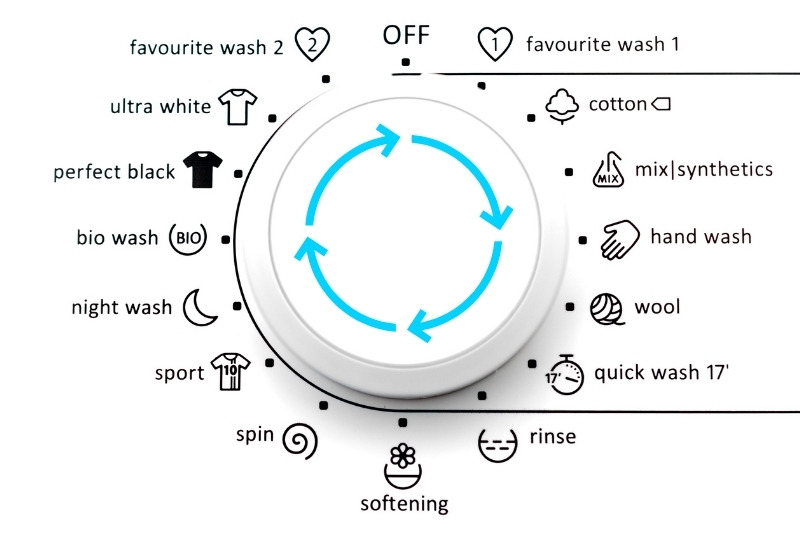
Each cycle has its own speed, time, and even temperature. So to make it easier for you, here are the cycles you’ll likely see on your appliance. We’ll also share what they mean so you can get the guessing game out of your laundry task.
- Pre-soak – A cycle where you fill the washing machine with water, but its agitation doesn’t start right away.
- Cotton, Linen, Normal – All these cycles have a higher spin speed. They also aren’t specifically fast or lengthy.
- Permanent Press/Casual – The cycle has an average or a slightly slower spin speed compared to other cycles.
- Colour – For the colour cycle, it will only use cold water when washing and rinsing.
- Quick Speed Wash – The cycle utilises hot water and it’s one of the cycles that have a quicker wash process.
- Delicates, Hand-wash, and Wool – These also utilise cold water for the wash and rinse process. After, they’re spun at a slower speed than usual. However, keep in mind that not all washing machines spin for this cycle.
- Bulky or Heavy – Bulky and heavy cycles have lower spin speeds.
- Sanitise – The sanitise cycle makes use of really hot water for washing.
You also may have other cycles such as whites, jeans, baby care, synthetics or hand wash. These are fairly self-explanatory and will have their own temperatures and cycle speeds.
If in doubt, always consult your manual. If you don’t have your manual then it can probably be found online by typing your machine’s model number into a search engine.
Wash vs Rinse – FAQs
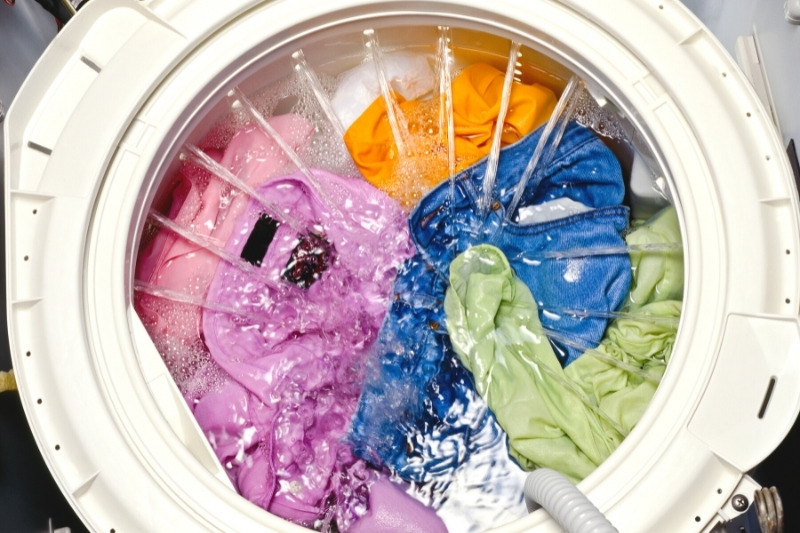
Does ‘rinse’ mean ‘wash’?
No. Rinse is just running your clothes through clean water. Washing is using detergent and/or softener to clean them. A good example is washing your hands. You wash them with soap, and then rinse off the soap with clean water.
Does rinse and spin clean your clothes?
Not if they have any stains, no. Rinse and spin is good for freshening up clothes or getting rid of any existing soap residue. It won’t effectively wash clothes as this cycle doesn’t use any detergent.
What comes first, wash or rinse?
The wash always comes before, and then the soap is rinsed out before your load is spun to get rid of any excess moisture.
What happens if you don’t rinse your clothes?
If your clothes don’t go through a rinse cycle then it’s likely that you’ll be left with an unpleasant amount of soap residue on your clothes. It would be the equivalent of not rinsing the washing up liquid off your dirty dishes.

I’m a mother of three who loves going on fun adventures with my family. With three little ones, I’ve learned the hard way how to keep a busy home clean! I want to share my tips and tricks to make your life as easy as possible.
